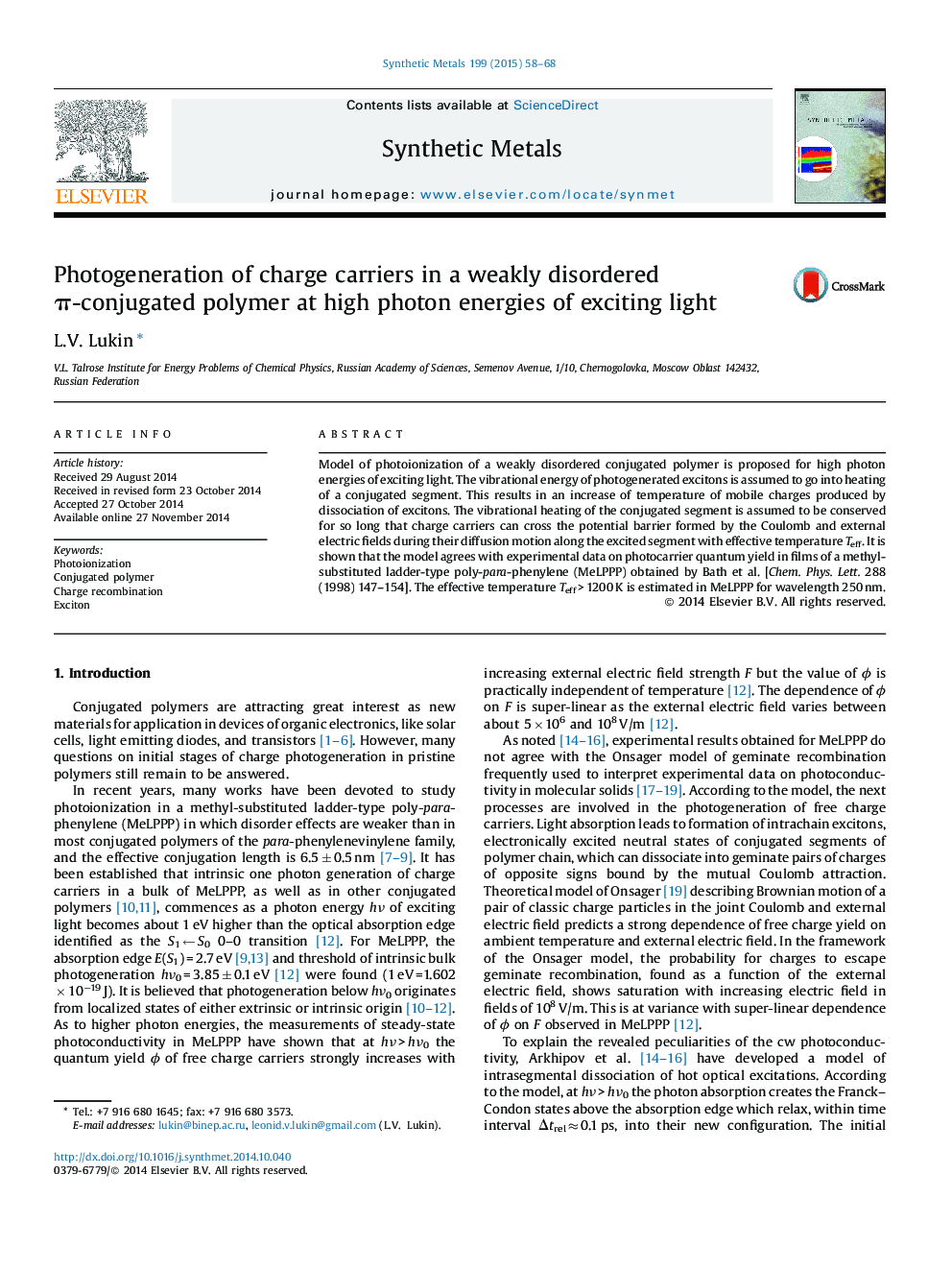| Article ID | Journal | Published Year | Pages | File Type |
|---|---|---|---|---|
| 1440773 | Synthetic Metals | 2015 | 11 Pages |
•A model of photoionization in weakly disordered conjugated polymers is proposed.•Photogenerated holes undergo 1D diffusion motion along conjugated segments.•Photocarrier quantum yield is determined by effective temperature of holes.•Effective temperature above 1200 K is estimated for a ladder-type poly-p-phenylene.
Model of photoionization of a weakly disordered conjugated polymer is proposed for high photon energies of exciting light. The vibrational energy of photogenerated excitons is assumed to go into heating of a conjugated segment. This results in an increase of temperature of mobile charges produced by dissociation of excitons. The vibrational heating of the conjugated segment is assumed to be conserved for so long that charge carriers can cross the potential barrier formed by the Coulomb and external electric fields during their diffusion motion along the excited segment with effective temperature Teff. It is shown that the model agrees with experimental data on photocarrier quantum yield in films of a methyl-substituted ladder-type poly-para-phenylene (MeLPPP) obtained by Bath et al. [Chem. Phys. Lett. 288 (1998) 147–154]. The effective temperature Teff > 1200 K is estimated in MeLPPP for wavelength 250 nm.
Graphical abstractFigure optionsDownload full-size imageDownload as PowerPoint slide
